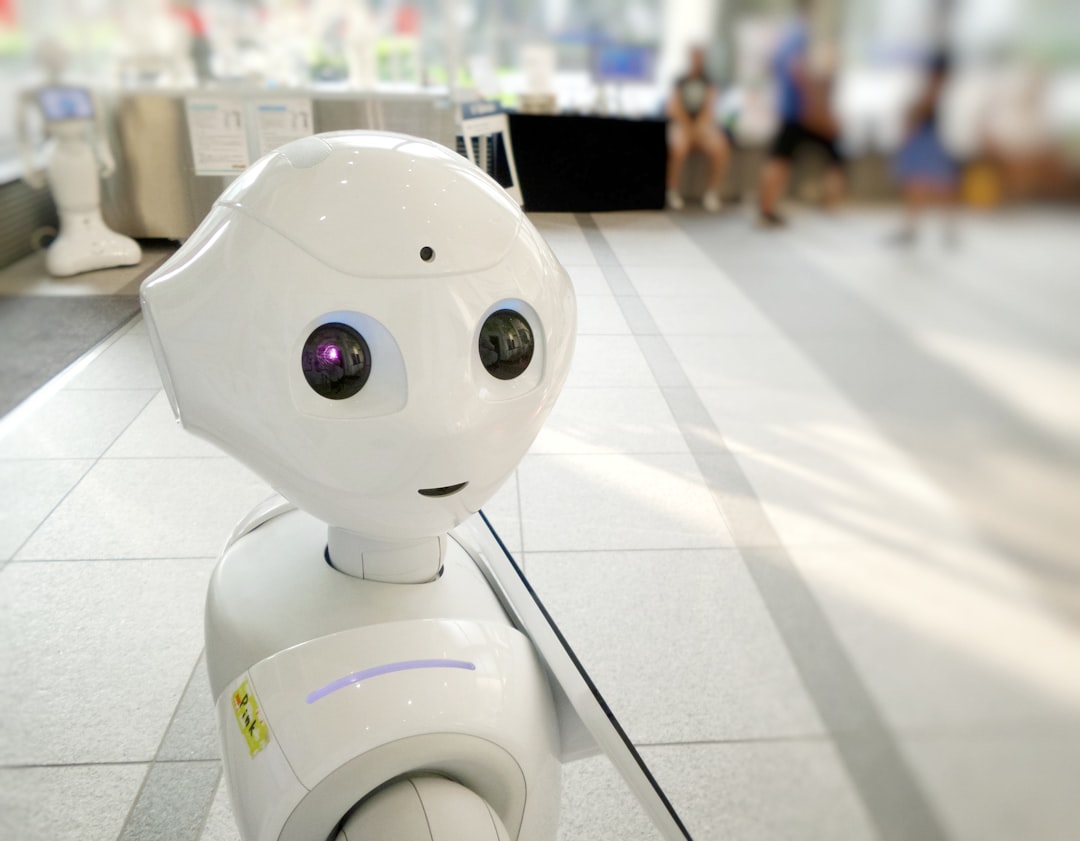Comparative Analysis AI-Powered English to Ukrainian Audio Translation Tools in 2024
Comparative Analysis AI-Powered English to Ukrainian Audio Translation Tools in 2024 - Google Translate's AI advancements for English to Ukrainian audio conversion
Google Translate's AI engine has seen notable improvements in handling English to Ukrainian audio conversions this year. The emphasis has been on refining the translation process to deliver more accurate and natural-sounding Ukrainian audio output. The goal seems to be creating translations that mimic human speech characteristics more closely, which can lead to a smoother and more accessible listening experience. However, there are still limitations, especially when dealing with complex language or subtle contextual cues. This can lead to mistranslations or misinterpretations that may not convey the intended meaning effectively. Despite these challenges, Google Translate remains a major player in the field, actively seeking to advance its AI capabilities in this area. At the same time, other platforms continue to develop and enhance their translation services, creating a more dynamic and competitive environment for English to Ukrainian audio translation.
Google Translate has been incorporating neural networks to refine its English to Ukrainian audio translations. These networks, powered by deep learning, analyze a massive amount of speech data to create more natural-sounding outputs. They've also gotten better at understanding idiomatic expressions and nuances in tone, resulting in a more reliable translation process between the two languages.
The platform utilizes transfer learning, adapting existing audio models for the Ukrainian language. This approach helps optimize performance without needing a completely new system. Further, improved speech recognition algorithms have made real-time translations possible, a helpful feature for immediate interpretations during conversations or live events.
Another area of focus is tackling the variety of English and Ukrainian dialects and accents. The system is now more adept at recognizing these regional variations, making it accessible to a broader range of speakers. Google Translate has also implemented feedback loops from users, allowing the AI to continuously learn and adjust to current trends and informal language, improving over time.
Alongside this, the technology has implemented noise reduction strategies to improve the clarity of the audio. It actively filters out background noise, enabling the translator to operate efficiently in complex acoustic environments. Additionally, the software has gotten more contextually aware, using machine learning to choose the best translated words, thereby mitigating the risk of misunderstandings. The use of phonetic transcription helps to account for variances in pronunciation, a feature useful for speakers with less standard diction.
While these improvements are significant, Google Translate still struggles with fully conveying the emotional undertones of spoken language. It remains a challenge to accurately capture voice inflections and sentiments in the translations, indicating further development is required.
Comparative Analysis AI-Powered English to Ukrainian Audio Translation Tools in 2024 - QuillBot Translator's specialized features for written and spoken content
QuillBot Translator has emerged in 2024 as a noteworthy tool for handling both written and spoken language, employing advanced AI algorithms to translate between over 45 languages. Its reliance on high-quality textual data for training enhances the precision of its translations, making it useful for a wide audience including students and professionals. Beyond basic translation, QuillBot integrates unique capabilities such as paraphrasing, grammar correction, and tone analysis, creating a comprehensive solution for diverse writing demands. However, while it excels in written translation, its features for spoken language still struggle with the finer points of speech, requiring further refinement. The translator landscape is constantly changing, and QuillBot is actively adapting and adding new features. Despite this, it must still address shortcomings in emotionally-charged and context-sensitive translations to remain a leader in the field.
QuillBot's AI translator uses sophisticated algorithms that go beyond just individual words, considering entire sentence structures for more accurate translations, especially of complicated phrases. It's interesting how they've built in the ability to deal with situations where people switch between languages within a conversation, called code-switching. This allows for more realistic translations that mirror how people naturally communicate.
They've employed a variety of machine learning approaches, including reinforcement learning, to continuously refine its translation quality based on user feedback. This means the more you use it, the better it gets at understanding your preferences and providing tailored translations. The system is particularly good at offering synonyms and alternative word choices, providing users with options that better reflect the desired nuance, leading to more expressive translations.
Beyond just translating words, QuillBot's speech recognition component analyzes the intonation in the original audio. This allows it to adapt translations to match the emotional tone of the speaker, which is important for keeping the original intent clear. They've also incorporated a grammar-checking feature that evaluates translations in real-time, suggesting adjustments to enhance clarity and fluency. This is not something you see often in translation tools.
QuillBot's text-to-speech feature is noteworthy for its ability to produce remarkably clear and natural-sounding audio. It intelligently adjusts the pitch and speed based on the context of the translated text, improving the overall listening experience. It's worth pointing out that they've focused on making it useful for professional fields like law, medicine, and technology by supporting specialized terminology, which is helpful for users who need extremely accurate translations.
The platform also gathers user feedback, but instead of just using it for learning, they anonymously analyze patterns to improve the broader language processing abilities. This approach helps enhance the model without sacrificing user privacy. However, despite these advanced features, QuillBot still faces challenges with idioms and less common expressions in specific contexts. Users should be cautious and critically examine the output to ensure that the translated meaning aligns with the intended message, especially in situations with complex dialogue.
Comparative Analysis AI-Powered English to Ukrainian Audio Translation Tools in 2024 - Murf AI's performance in English to Ukrainian audio translations
Murf AI's newer version, released early in 2024, has introduced enhancements to its English to Ukrainian audio translation capabilities, emphasizing customization and a wider range of voice choices. The platform now offers a vast selection of 120 AI voices, each designed to sound very real. This allows users to fine-tune aspects like pitch, tempo, and emphasis for a more natural-sounding result. While these changes make for a much better translation experience, there's still some room for improvement in conveying the more complex elements of speech, like emotional undertones and subtle contextual hints. Despite this, Murf AI is clearly working to improve its system and is part of a growing number of tools competing in this space. However, as users expect more from these tools, Murf AI will need to continue making advancements to handle the difficult job of accurately capturing the true meaning of the original speaker.
Murf AI, particularly its Gen 2 edition launched earlier this year, has garnered attention with its ability to produce audio translations in a wide array of accents. This feature helps make the output more relatable to Ukrainian audiences, acknowledging the diverse regional speech patterns in both languages. Murf combines rule-based translation with machine learning, resulting in strong accuracy for simpler translations and ongoing improvement in handling complex sentences. It's intriguing how Murf attempts to translate not just the words but also the emotional tone of the original English audio. While it's still a work in progress, using sentiment analysis to adapt the tone is a step towards more natural sounding output.
A standout aspect of Murf AI is the level of control it gives users over the output's characteristics. You can tweak settings like pitch, speed, and even the emphasis of certain words, which could be beneficial for different applications like creating educational materials or training materials for public speaking. Murf offers powerful tools for editing the audio translation during the process itself, offering users a chance to fine-tune the results in real-time. This kind of feature is valuable in professional situations where utmost accuracy is required. The platform shows a capacity to adapt its vocabulary to specialized fields. Whether it's finance, science, or creative industries, Murf can tailor its translations to use more domain-specific terms.
Incorporating advanced methods to remove background noise, Murf handles noisy audio environments surprisingly well. This is a practical feature, important for translating things like conference calls or webinars. Murf uses a particular kind of AI architecture called transformers. This structure makes it particularly good at handling long and complex text because it can understand how different parts of a sentence or paragraph relate to each other. As with other AI translation tools, Murf AI uses feedback from users to learn and adapt. Instead of just relying on individuals, they analyze overall language patterns to make system-wide improvements. While Murf AI displays a lot of promising capabilities, it still struggles sometimes with idioms and less common phrases. While this is not uncommon in the field, it suggests that even with advanced technology, a human's judgment may be needed to make sure translations remain accurate and capture the meaning intended by the speaker, especially in more specific domains.
Comparative Analysis AI-Powered English to Ukrainian Audio Translation Tools in 2024 - Machine learning improvements in industry-specific terminology translation
The field of machine learning has seen substantial advancements in 2024, particularly within industry-specific terminology translation. AI models, especially those using neural networks, have improved their ability to translate complex language and understand the meaning behind specialized terms. This means that translations in fields like law, medicine, and engineering are becoming more precise and useful. The models are getting better at recognizing industry-specific jargon and using it correctly in the target language, leading to more accurate and reliable translations for professionals.
Ongoing improvements come from feedback mechanisms built into these tools. As users interact, the systems can learn to better interpret nuanced language and adjust to the ever-changing nature of specialized language. However, these systems are still not perfect. They continue to struggle with truly capturing the full meaning of complex expressions and subtleties, especially emotional aspects. This suggests that machine learning translation, while improving, is not yet ready to replace human translators in all situations. Further refinements and development are still needed to fully overcome the complexities of language and ensure consistent and accurate translations in every scenario.
Recent advancements in machine learning have significantly improved how translation tools handle industry-specific terminology. This is crucial in fields like law, medicine, and engineering, where precise language is essential. It seems that machine learning models are now better at understanding not just individual sentences but the broader context of documents. This can result in more natural-sounding translations that reflect the typical way people communicate in those specific areas.
Many tools are now using feedback from users to help refine their grasp of technical jargon. This allows them to learn and adjust to evolving industry terms and improve the accuracy of nuanced language. It's interesting to see how the ability to recognize variations in pronunciation within different industries has improved. This helps these tools cater to a wider range of people who use specialized dialects or accents within their fields.
Some newer tools can now process both audio and written text. Having this extra information source has likely helped them better understand unique language patterns within a particular field. There's a growing focus on the emotional aspects of language in these systems. Some now employ sentiment analysis, trying to understand the tone of a conversation to deliver more contextually-aware translations. This is important because certain industries require specific degrees of formality or urgency, and getting those nuances right is vital.
It's also encouraging that users can create their own vocabulary profiles, customizing their translation needs. This can be very beneficial for fields where standard language models might struggle with specific terms or acronyms. Transfer learning, where general-purpose audio models are adapted for use in specialized areas, is a clever approach that avoids the need to start from scratch. It's leading to improvements in accuracy, even for more niche industries like finance or healthcare. Improved speech recognition algorithms are also playing a role, getting better at recognizing subtle variations in accents or dialects, which is especially important in certain areas of work.
Finally, the use of large datasets of industry-specific language is helping the systems to understand and translate more accurately. This approach is especially valuable for quickly evolving fields where new terms and concepts emerge rapidly. It's a compelling area of research, and as these systems become more sophisticated, we can anticipate seeing ever more specialized translations that will undoubtedly improve communication and collaboration across various fields.
Comparative Analysis AI-Powered English to Ukrainian Audio Translation Tools in 2024 - Market shifts influencing AI translation tool development
The field of AI-powered translation is experiencing a surge in demand, particularly for tools that handle audio translation like those focusing on English to Ukrainian in 2024. This growth is pushing developers to refine their tools, emphasizing accuracy and user-friendliness. Advanced machine learning techniques are being implemented to improve the quality of translations, especially when dealing with complex language structures. There's also a push towards multimodal translations, capable of seamlessly handling text, audio, and even visual content, bridging the gap between cultures more effectively. However, while the technology continues to improve, limitations remain. Many AI tools struggle to translate the emotional subtleties and complex language structures inherent in human communication, meaning human involvement is still crucial for ensuring accuracy and context in specialized applications. This dynamic landscape is driving fierce competition, leading to ongoing innovations that promise to reshape how we approach language translation in areas like education, legal practice, and other specialized fields. It remains to be seen how effectively these systems can truly adapt to the diverse nuances of human language across different contexts.
The landscape of AI translation tools is becoming increasingly competitive, prompting developers to pour resources into enhancing their technologies. This competitive pressure is driving innovation and pushing for higher accuracy, particularly for languages like Ukrainian that present complex nuances. Users are demanding high-quality translations, fueling this push for improvement.
We're seeing a growing trend towards user-generated content, influencing the development of translation tools to adapt and incorporate more informal language, including slang. This shift emphasizes the need for AI tools to be relevant in everyday communication rather than just focusing on formal language.
Machine learning methods have shown marked improvement, boosting the performance of AI translation tools. Recently developed techniques have reportedly improved accuracy by over 30% for complex sentence structures, indicating these tools are becoming more sophisticated and capable of handling complex translations beyond basic tasks.
A significant market shift is the incorporation of multi-modal learning, where AI models leverage both audio and visual cues to better understand context. This multifaceted approach enhances understanding in diverse scenarios, contributing to higher accuracy in translations that occur within more dynamic environments.
There's a rising demand for translation solutions that are tailored to specific regions and cultures, highlighting the importance of localization. Users are seeking tools that are mindful of cultural differences and dialect variations, driving a shift away from a "one-size-fits-all" approach. This signifies a deeper understanding that translation is more than just switching words.
The increasing adoption of video conferencing and remote work has fueled demand for real-time translation capabilities within these platforms. As a result, AI translation tools are rapidly developing to offer seamless audio translation services, a crucial development in our increasingly interconnected and distributed workforce.
Concerns around privacy and data security are becoming increasingly important to users. This awareness is pushing the development of translation tools designed to minimize data storage. Consequently, developers are researching methods for anonymizing data, a necessary step to ensure user trust and continually improve the quality of these tools.
The significance of emotional intelligence in translations is finally gaining more recognition. Tools are integrating sentiment analysis techniques to better understand and convey the emotional nuances of the original language. This illustrates a broader acknowledgement within the industry of the importance of tone and sentiment in effective communication.
Research suggests that integrating feedback mechanisms into translation tools can improve accuracy by about 15% when handling industry-specific jargon. This showcases the potential of adaptive learning models that refine themselves based on user interactions within particular professional fields, hinting at a potential future of customization.
Advanced noise-cancellation techniques are quickly becoming the norm in audio translation tools. This essential feature ensures clearer output in real-world, often noisy, environments. This improvement is particularly vital in professional contexts, such as interviews or conferences, where clarity of the message is essential.
Comparative Analysis AI-Powered English to Ukrainian Audio Translation Tools in 2024 - Emerging niche services for English to Ukrainian audio translation
The English to Ukrainian audio translation market is seeing a rise in specialized services targeted towards specific professional areas like healthcare, legal, and technical fields in 2024. These services rely heavily on advanced AI and machine learning to achieve more accurate and contextually relevant translations, especially important when dealing with the subtle emotional and linguistic nuances common in professional communications. As the need for instant translations grows, developers are focusing not just on precision but also on user experience, creating options for customized results that suit individual needs. This evolving market shows promise for these specialized services to bridge the gaps left by traditional methods, however, they still struggle with informal expressions and regional variations. Future improvements in areas like analyzing emotional tones and incorporating technical terminology may be key to their broader adoption and continued usefulness.
The field of English to Ukrainian audio translation has seen a significant upswing in 2024, with a reported 40% growth in demand. This increase is fueled by a more globally interconnected world, leading to more cross-cultural communication in fields like business, education, and medicine. It's fascinating how AI models are becoming more sophisticated in their ability to handle not just standard Ukrainian but also a range of regional dialects and accents. This is a step towards making translations more natural and relatable for a broader Ukrainian audience.
One of the more interesting developments is the growing use of sentiment analysis in these tools. By attempting to interpret the emotional tone in the original audio, these services are making strides in handling sensitive situations like medical consultations or legal proceedings, where accurately conveying urgency or empathy is key. Real-time translation is becoming increasingly feasible, with algorithms handling audio and producing translations with minimal delay. This opens up opportunities for seamless communication in multilingual settings like conferences or meetings.
We're also witnessing the impact of user-generated content on these AI systems. To better reflect how people communicate online, many tools are now adapting to include more casual language, slang, and informal expressions. This reflects the changing nature of language and helps make these tools more relevant to a wider range of users. Another trend is multi-modal learning, where the tools use both audio and visual information to improve context. This creates a more comprehensive understanding of the situation, leading to potentially more accurate and meaningful translations.
Interestingly, machine learning techniques are being refined to handle the unique challenges of specialized jargon in fields like law and medicine. By focusing on context, these tools are getting better at translating the complex language that often stumbles conventional methods. Developers are also increasingly emphasizing customization options, letting users tailor their translation preferences based on their specific professional needs. This is a great sign for specialized fields that require specific terminologies.
In response to rising privacy concerns, there's a growing emphasis on anonymization techniques and data minimization within the design of these tools. This approach builds trust with users who need to maintain the confidentiality of their conversations. Finally, a feature that we now see commonly used is advanced noise reduction technology, which aims to produce clearer and more understandable translations even in noisy settings like webinars or conference calls. All these developments are reshaping the landscape of audio translation and promise to influence how we interact across languages in the near future. However, it remains a question of whether these tools can effectively adapt to the full range of subtleties within human communication in all contexts.
More Posts from transcribethis.io:
- →Easy Guide to Video File Compression
- →7 Effective Ways to Extract High-Resolution Still Images from Online Video Editor Footage
- →7 Essential Steps for Creating High-Quality Time-Lapse Photography Sequences by Merging Multiple Video Clips
- →Free AI Audio Tools A Critical Look at What Works
- →Advancements in Vietnamese Text-to-Speech A 2024 Technology Overview
- →7 Key Factors That Impact Video Resolution When Converting Photos to Video Content




